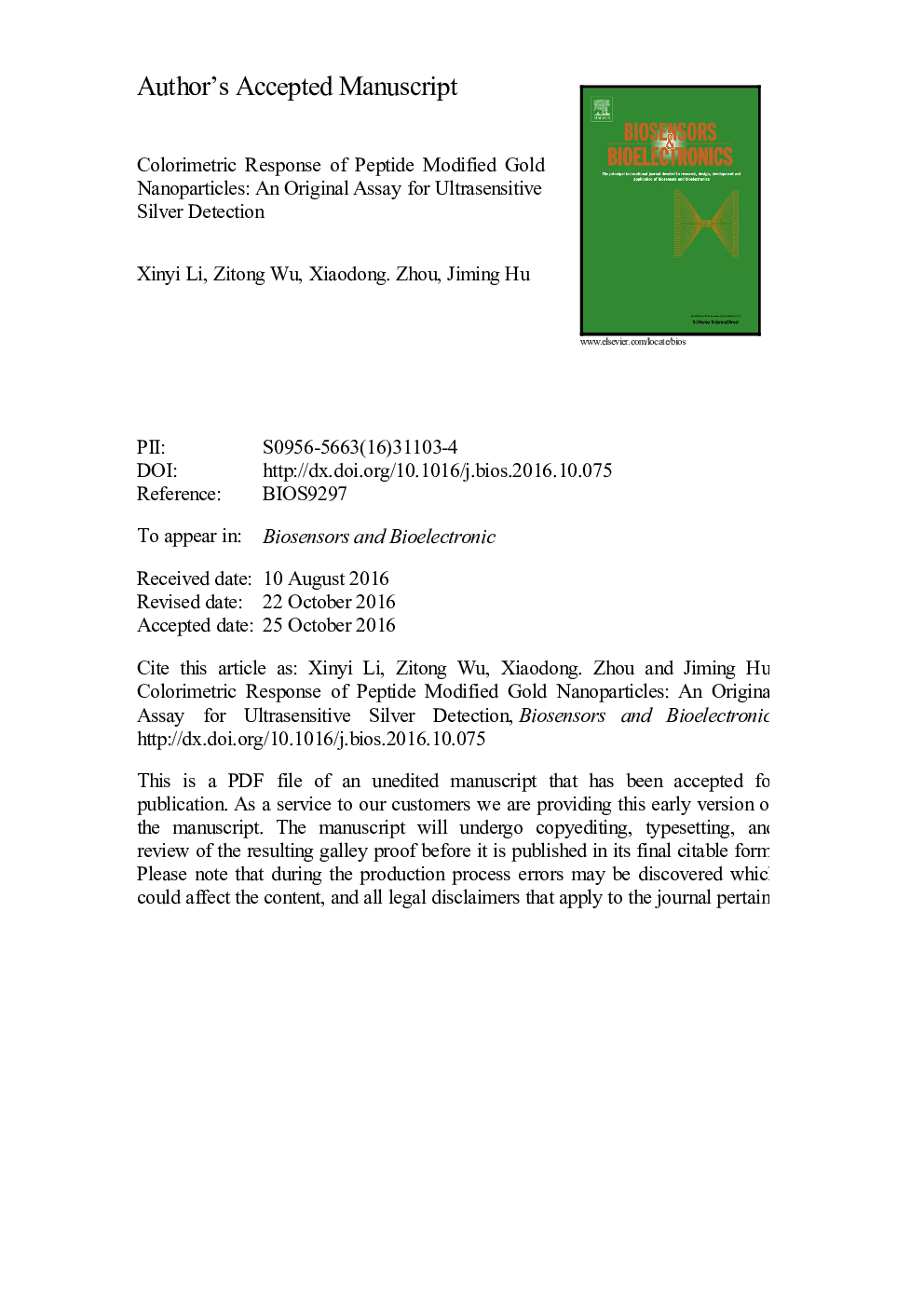| Article ID | Journal | Published Year | Pages | File Type |
|---|---|---|---|---|
| 5031632 | Biosensors and Bioelectronics | 2017 | 24 Pages |
Abstract
In this article, we for the first time present an original and ultrasensitive assay to detect Ag+ ions, with which the aggregation of the given peptide-modified gold nanoparticles (peptide-AuNPs) can be triggered by the interaction between peptides and Ag+. The approach has rarely been used in the colorimetric determination of Ag+, because the mechanism of the above-mentioned interaction has not been studied through. In our assay, the principle of this interaction was investigated. Moreover, we applied it in the design of an extremely sensitive sensor for Ag+ detection with great selectivity. It is the Ag+-induced folding structure of the peptides that leads to the aggregation of peptide-AuNPs. The aggregation involves the formation of 4-coordinated complexes between Ag+ and peptides via bonding with the carbonyl oxygen and the nitrogen of the α-amino group in the peptides. The result shows that Ag+ ions can be selectively detected as low as 7.4 nM with a linear range of 10-1000 nM. Compared with other approaches, the proposed approach demonstrates superior simplicity, sensitivity, stability and time-saving. Furthermore, the biosensor excels in the practical application in water samples (e.g., lake, tap and drinking water) owing to its non-interference and on-site rapid determination.
Related Topics
Physical Sciences and Engineering
Chemistry
Analytical Chemistry
Authors
Xinyi Li, Zitong Wu, Xiaodong. Zhou, Jiming Hu,
